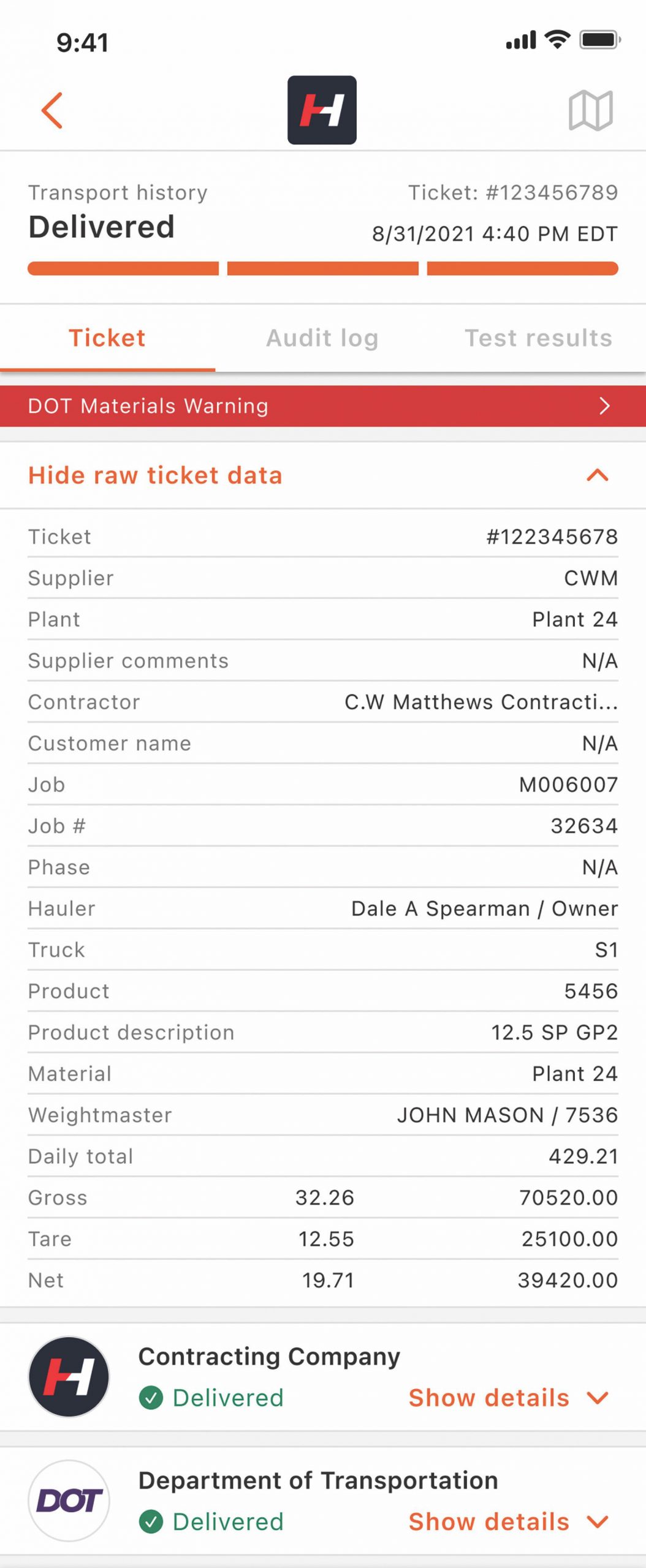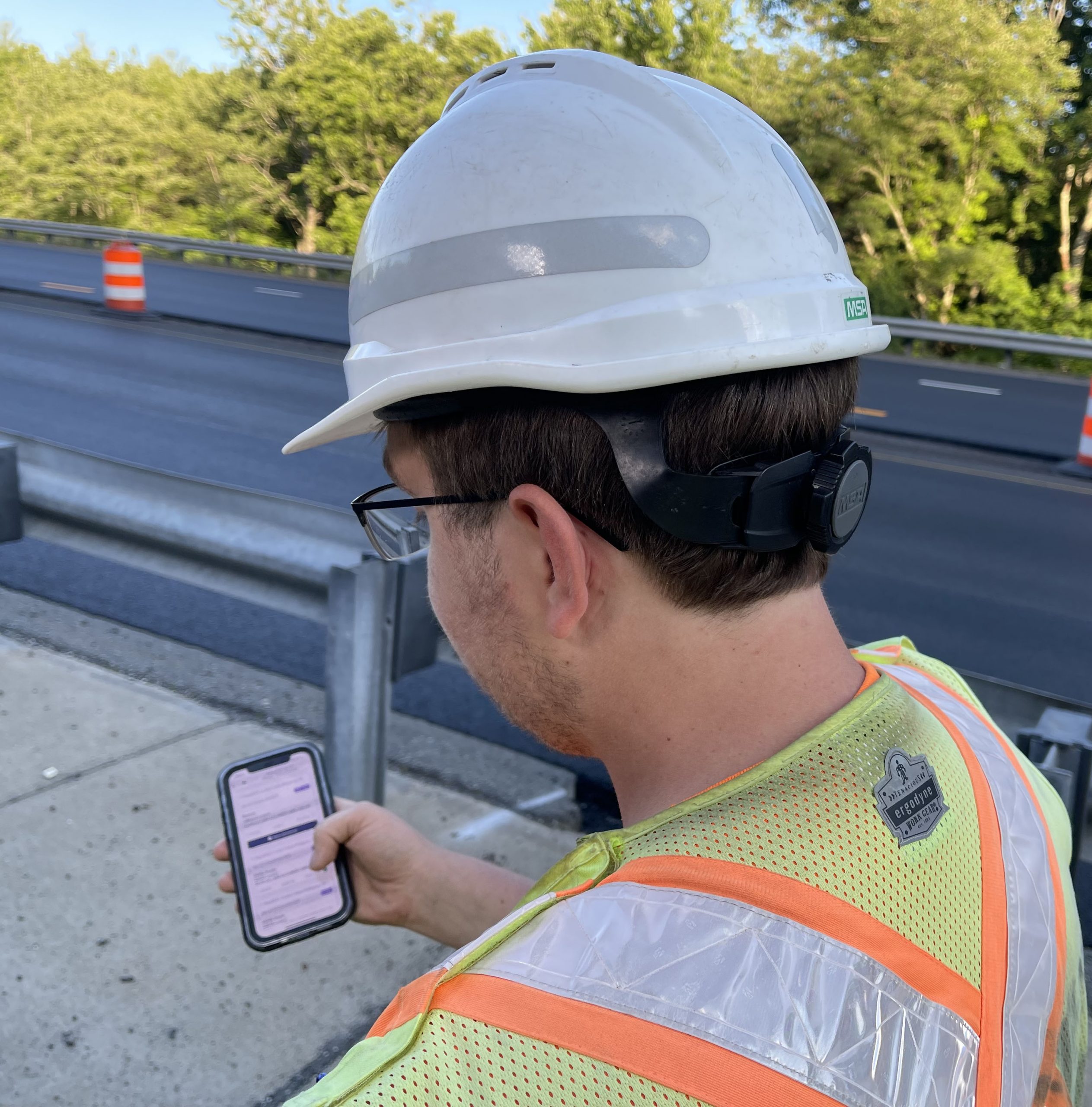By Craig Yeack
Covid-19 has pushed our industry to catch up with digitization, and we pretty much like it. The service-orientated architecture of today’s information technology (IT) systems empowers concrete producers to choose the best IT landscape for their needs. But how do state transportation departments harvest and leverage the new wealth of unique electronic information we make available? More importantly, how do they share it back with us?

Not so long ago, departments of transportation (DOTs) collected paper tickets. They were receipted, inspected, annotated, referenced to cylinder break tests, shared as needed and stored. As a matter of public interest, the Freedom of Information Act (FOIA) mandates that state and federal agencies turn over records when requested. FOIA allows anyone with a legitimate reason to dig through a DOT’s banker’s boxes of hard copy tickets in storage. The manual searches were not easy, but they worked.
Now, electronic information is being sent to DOTs from many sources via different systems in various digital file formats. Complicating issues, precious few DOTs are provisioned with computer programmers to gather, convert and import the e-information into a centralized database, let alone build apps to use the data in meaningful ways.
Without a central repository and the tools to mine it, complying with FOIA requests is challenging. DOT staff must search through email inboxes to produce documents, and PDFs are not always searchable. Many despair that in the new technology world where everything is possible, nothing is possible.
Enter Joe Spinelli of HaulHub. Some kids grow up playing in the sandbox with dump trucks. Joe grew up in a construction family in Boston with the real things. Fast forward to present day, and he has created a technology solutions company for the heavy construction industry. One of HaulHub’s product offerings enables DOTs to gather electronic data no matter the delivery platform, empowering them to save time for the entire value chain.
Consider e-tickets. As the tidal wave of migration to electronic tickets and signatures continues, transportation departments are presented with e-tickets from many producers using various formats. Joe’s team has created a central hub that can ingest data from any system and render it useful for DOT use via desktop and mobile apps. He calls the digital platform a “catcher’s mitt” and dubs the mobile app for DOTs the “killer app.”
The catcher’s mitt pushes data like a commodity, but the killer app does something with it. How about allowing producers self-service for data access, or providing DOT staff with easy access to the documents needed to fulfill FOIA requests? How about immediate monitoring of job progress by governmental infrastructure owners and their representatives? Or having base compaction data tied to each load? The list of what is possible through the app is as endless as the highway system is long.

WHY SHOULD PRODUCERS CARE?
Right now, producers who work in multiple states are confronted with a maze of state DOT requirements for electronic data transfer. A company doing business in five states usually deals with much more than five different format requirements, because regional offices within each state often have autonomy. Joe’s vision is to set a standard for data flow through the digital hub—the catcher’s mitt—thus reducing the angst of all parties.
Also, if producers are going to push information to DOTs, they will absolutely need to have the DOTs push information back. Pay requests have typically been done on paper, with inevitable time delays. With digital tools, those delays could be compressed to perhaps no more than a day. Quality control data could also flow immediately. Using Joe’s killer apps to build on the data will provide producers with clear wins.
BUT DOES IT WORK?
Delaware DOT was the first supporter of HaulHub’s eTicketing portal and provided the proof-of-concept environment. After 50 pilots took place with success, multiple transportation departments have entered multiyear contracts, including Indiana DOT.
“We are excited about the prospect of e-ticketing and e-construction growth in the coming year,” says Jacob Blanchard, PE, a field engineer for Indiana DOT’s Division of Construction Management.
To be sure, we need a standard for DOT electronic communication. Equally important is a common set of applications built on top of the data to add value. Our job is to push this vision forward in partnership with the DOTs. Joe, a lifetime citizen of the industry, has just the platform.

Craig Yeack has held leadership positions with both construction materials producers and software providers. He is co-founder of BCMI Corp. (the Bulk Construction Materials Initiative), which is dedicated to reinventing the construction materials business with modern mobile and cloud-based tools. His Tech Talk column—named best column by the Construction Media Alliance in 2018—focuses on concise, actionable ideas to improve financial performance for ready-mix producers. He can be reached at [email protected].